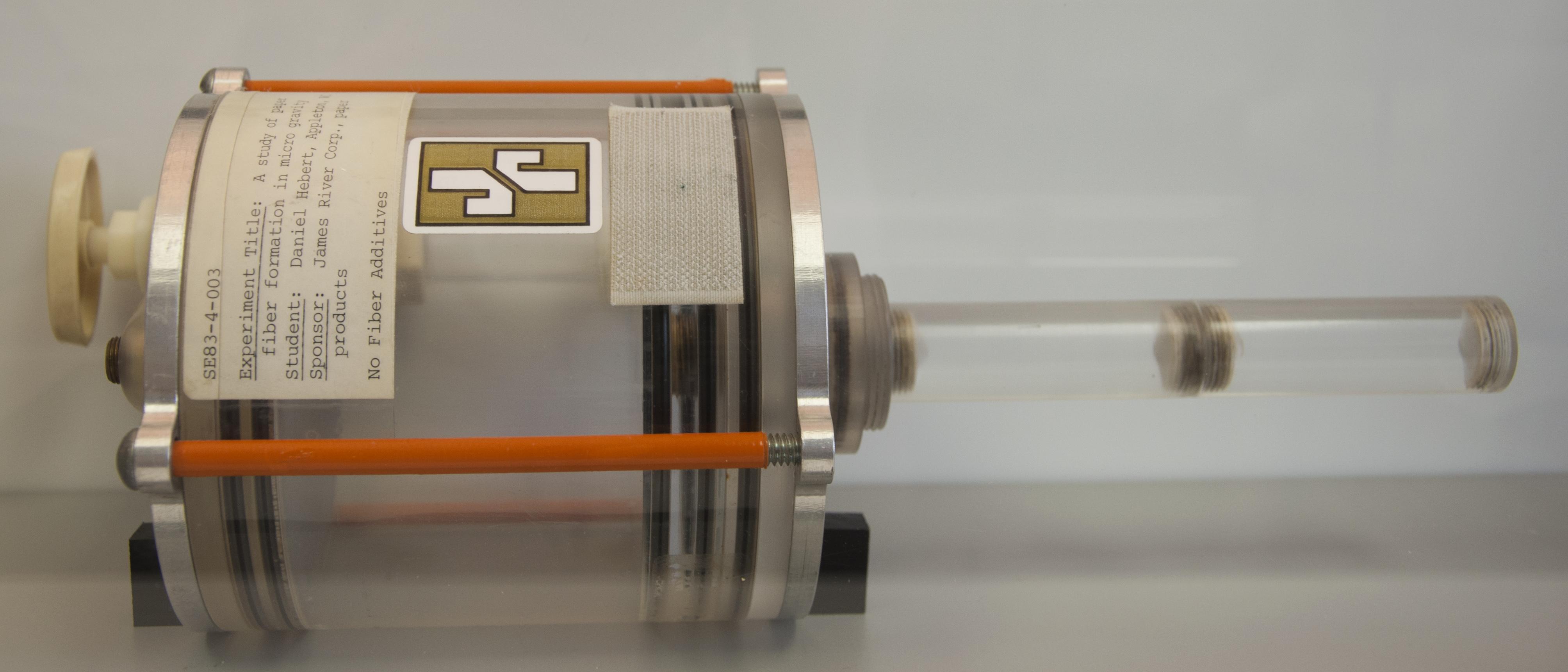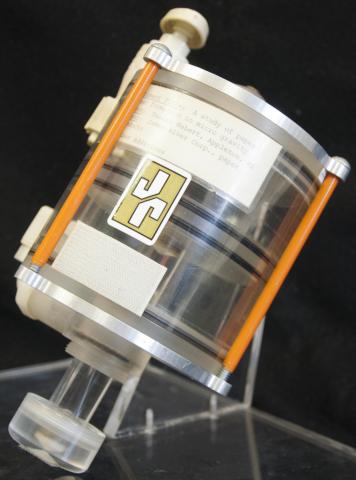Papermaking Tools for Zero Gravity Environments
August 1, 2019
This month's feature is a pair of papermaking machines for "outer space". They are numbered in the museum's collection as 1998.008.1a and 1998.008.1b
In 1983, high school student Daniel Hebert designed an experiment to discover if paper could be made in space. The James River Corporation sponsored this project via a NASA program that allowed students to design experiments for astronauts to carry out. In 1986 a total of nine machines, including these two were flown in the space shuttle Columbia into low earth orbit to conduct the experiments.
Since there is zero gravity in space, water cannot drain from the pulp, making traditional papermaking techniques impossible. To compensate for this, Hebert's papermaking machines used a piston and pressure to force water past the mesh screen, leaving behind the cellulose fibers to form a sheet of paper. On January 14 1986, astronaut Steve Hawley successfully made nine pieces of paper in space. As an experimental control, nine other pieces of paper were made using the same process on Earth. The nearly identical results prove that paper can be made in low gravity environments. To make paper in space rather than rely on gravity, papermakers simply need additional tools to remove the water from the slurry.
We hope that you enjoyed this peek at our collection! We'll be back next month with another artifact. Have a great August!
Category: 3-D Objects
Region of Origin: American
Keywords:
Tools


